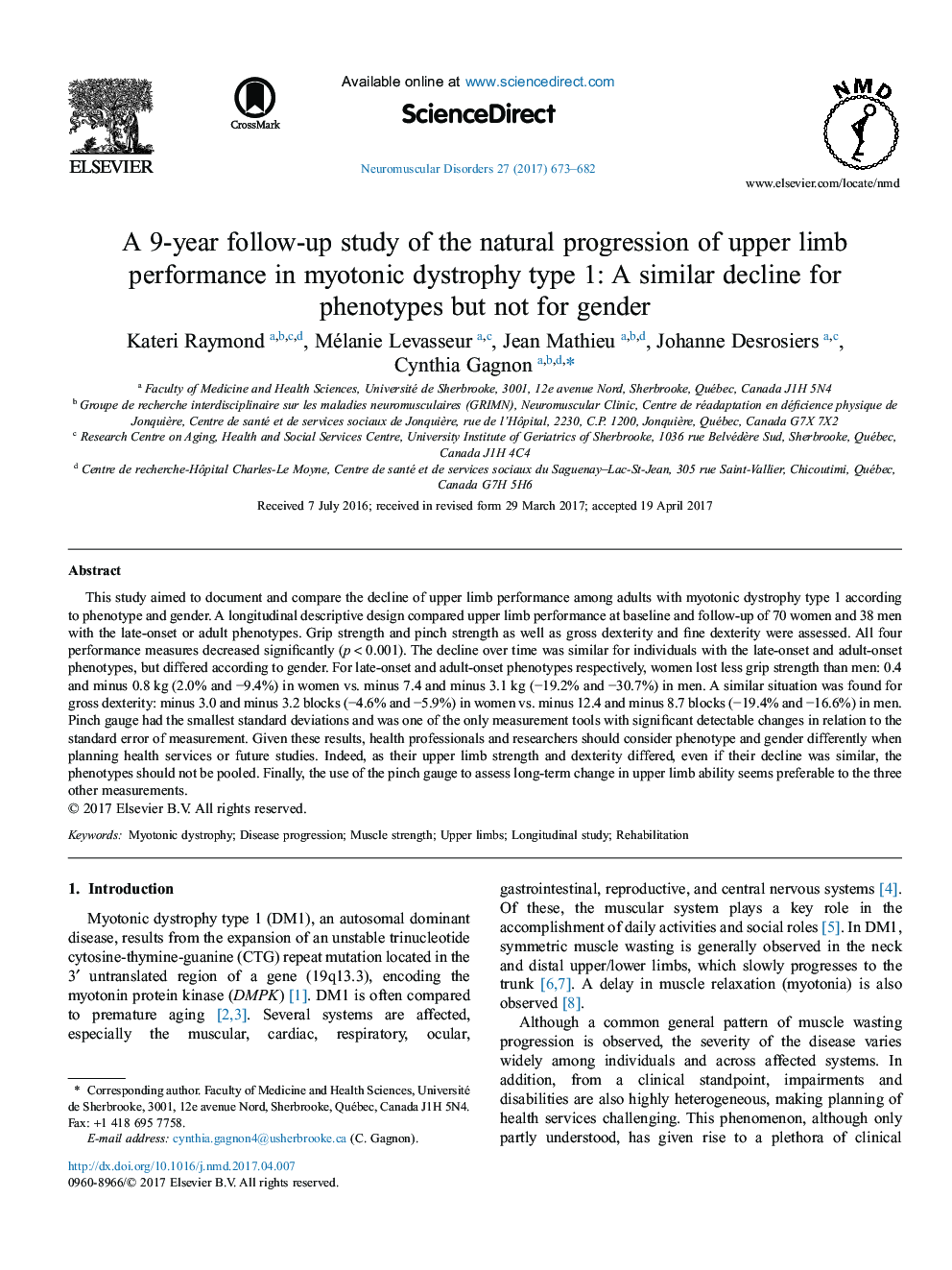| Article ID | Journal | Published Year | Pages | File Type |
|---|---|---|---|---|
| 5632195 | Neuromuscular Disorders | 2017 | 10 Pages |
â¢The decline over time for upper limb performance was similar for both phenotypes.â¢The decline over time for upper limb performance differed according to gender.â¢Using pinch gauge to assess long-term change is preferable.
This study aimed to document and compare the decline of upper limb performance among adults with myotonic dystrophy type 1 according to phenotype and gender. A longitudinal descriptive design compared upper limb performance at baseline and follow-up of 70 women and 38 men with the late-onset or adult phenotypes. Grip strength and pinch strength as well as gross dexterity and fine dexterity were assessed. All four performance measures decreased significantly (pâ<0.001). The decline over time was similar for individuals with the late-onset and adult-onset phenotypes, but differed according to gender. For late-onset and adult-onset phenotypes respectively, women lost less grip strength than men: 0.4 and minus 0.8âkg (2.0% and â9.4%) in women vs. minus 7.4 and minus 3.1âkg (â19.2% and â30.7%) in men. A similar situation was found for gross dexterity: minus 3.0 and minus 3.2 blocks (â4.6% and â5.9%) in women vs. minus 12.4 and minus 8.7 blocks (â19.4% and â16.6%) in men. Pinch gauge had the smallest standard deviations and was one of the only measurement tools with significant detectable changes in relation to the standard error of measurement. Given these results, health professionals and researchers should consider phenotype and gender differently when planning health services or future studies. Indeed, as their upper limb strength and dexterity differed, even if their decline was similar, the phenotypes should not be pooled. Finally, the use of the pinch gauge to assess long-term change in upper limb ability seems preferable to the three other measurements.
